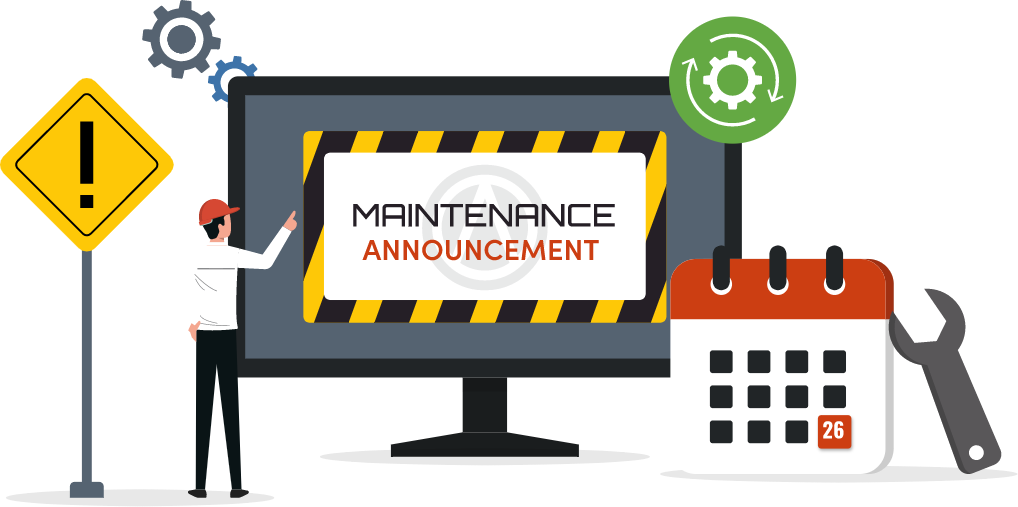What is incident management in a restaurant context?
Incident management is the process of recording, investigating, and resolving events that affect safety, health, or operations, such as employee injuries, guest accidents, or foodborne illness. It ensures compliance, reduces risk, and prevents repeat incidents.
How to Build an Effective Incident Management Process in Your Restaurant
Overview
Running a restaurant means balancing dozens of moving parts every day - guest experience, food quality, staff management, and compliance. In the middle of this fast-paced environment, incidents like guest injuries, employee accidents, or food safety issues can happen without warning. While no owner wants to deal with them, the reality is that how you manage and document incidents determines whether they become isolated events or recurring problems.
An effective incident management process isn't just about filling out paperwork. It's about creating a system that protects your staff, guests, and business from avoidable risks. According to OSHA and local health authorities, proper reporting and corrective actions are critical for compliance - and they also serve as evidence that your restaurant takes safety seriously. More importantly, they help you identify patterns and prevent incidents from happening again.
For restaurant owners, this means moving beyond reactive problem-solving and building a clear, repeatable framework for recording incidents, assigning corrective actions, and tracking outcomes. Done right, incident management not only reduces liability but also creates a safer, more confident workplace where staff know exactly what to do when something goes wrong.
Step One. Standardize How Incidents Are Reported

The foundation of an effective incident management process is consistency. If every manager or employee records incidents differently - or worse, if some aren't documented at all - your restaurant ends up with fragmented information that is difficult to use or defend during inspections. Standardization ensures that every incident, no matter how minor, is reported in the same structured way.
At a minimum, every incident report should capture the who, what, when, where, and how. For example - Who was involved? What exactly happened? When did it occur? Where in the restaurant did it take place? How was the situation handled in the moment? These details may seem basic, but they create a reliable record that can be referred back to during investigations or compliance checks.
To make this easier, create or adopt a standardized incident report form. This could be a paper form kept in a binder near the manager's office, or a digital template accessible on tablets or staff smartphones. What matters most is that every employee knows where to find it and how to use it.
Data shows that organizations with standardized reporting practices are far more likely to identify patterns and implement meaningful corrective actions. For restaurants, this means spotting recurring hazards - like a slippery entryway or a faulty fryer - before they cause repeat problems. By removing guesswork and inconsistency, standardized reporting lays the groundwork for a safer workplace and a process you can rely on under pressure.
Elevate Food Safety, Simplify Compliance!
Experience Seamless Food Safety with Altametrics!
Step Two. Train Staff to Respond and Document Quickly
Even the best incident report form won't help if your staff don't know when or how to use it. In restaurants, where every second counts, employees may feel tempted to move on quickly after an accident to keep service running. The problem is that delays or incomplete reports can lead to missing details, weak corrective actions, or even compliance issues if regulators become involved. That's why staff training is just as important as the reporting system itself.
Training should focus on two things - immediate response and timely documentation. Employees need to understand that their first priority is always safety - helping the injured person, preventing further harm, and notifying a manager. Once the situation is under control, they should move quickly to complete the report while the details are still fresh. A practical way to reinforce this is through quick refresher sessions or role-play exercises. For example, simulate a slip-and-fall scenario during pre-shift meetings so staff can practice responding, documenting, and escalating the issue.
It's also important to address the emotional side. Some employees may feel nervous about reporting incidents, worrying it could reflect poorly on their performance. Reassure them that incident reporting is about creating a safer workplace, not assigning blame. When staff see reporting as a shared responsibility rather than a burden, they're more likely to act promptly and accurately.
By making quick response and documentation a routine expectation, you ensure that no incident slips through the cracks and that every report provides a clear, detailed picture you can rely on.
Step Three. Assign Responsibility for Incident Oversight
A common weakness in restaurant incident management is the lack of clear accountability. Even when incidents are reported correctly, they can sit unfinished if no one is responsible for reviewing, validating, and following up. This creates gaps in your records and increases the risk of unresolved hazards or missed corrective actions. To avoid this, every restaurant should establish a defined role for incident oversight.
Typically, the general manager or shift manager is best positioned to handle this responsibility, since they're on-site and can act quickly. Their role should include reviewing all incident reports for accuracy, ensuring key details are captured, and logging the information into a central system or file. Larger operations may also designate a safety officer or a compliance lead who takes ownership of the process across multiple locations.
Oversight also means being the point person for communication. If an incident involves medical treatment, regulatory reporting, or guest follow-up, this designated manager ensures those steps are completed on time. Without a central point of accountability, tasks can easily fall through the cracks.
Having a clear owner of the process doesn't just improve record-keeping - it builds trust. Staff know who to turn to, regulators know your reports are credible, and owners know that nothing gets overlooked.
Accountability transforms reporting from a pile of forms into a managed, trackable system that reduces risk and strengthens compliance.
Step Four. Investigate and Identify Root Causes

Recording an incident is only the beginning. To truly prevent recurrence, restaurant owners and managers need to look deeper and identify the root cause of what happened. Too often, incidents are filed away with surface-level explanations - "wet floor," "burn from fryer," or "allergic reaction." While these descriptions are useful starting points, they don't explain why the issue occurred or how to stop it from happening again.
A simple tool for restaurants is the "5 Whys" technique. Start with the incident - "employee slipped on a wet floor." Ask why - because water was spilled near the dish area. Why again - because a drain was partially blocked. Why again - because the maintenance schedule hadn't been followed. By continuing this process, managers move beyond symptoms and uncover the real breakdown, whether it's equipment failure, process gaps, or insufficient training.
Root cause analysis doesn't need to be overly technical. What matters is creating a mindset of curiosity and thoroughness. Involving staff can also provide valuable insights - they're often closest to the issue and can highlight overlooked hazards.
Data reinforces the value of this step- organizations that systematically analyze root causes reduce repeat incidents significantly, saving both time and money. For restaurants, this means fewer guest injuries, less downtime, and more consistent compliance with safety standards.
By moving past surface-level explanations, you transform incident reports from static documents into tools for continuous improvement. The goal is not just to record what went wrong, but to understand why it happened and ensure it doesn't happen again.
Stay Compliant, Elevate Your Business!
Discover Altametrics for Effortless Compliance Management
Step Five. Implement Corrective Actions
Once the root cause of an incident is identified, the next step is translating that knowledge into corrective action. Without this step, your reports remain static records of problems rather than tools for improvement. Corrective actions bridge the gap between knowing what went wrong and ensuring it doesn't happen again.
Effective corrective actions should be specific, actionable, and time-bound. For example, if a blocked drain led to repeated slips, the corrective action might be - "Schedule weekly drain checks by kitchen supervisor starting immediately." If an employee burn was traced to improper fryer handling, the action could be - "Retrain all BOH staff on fryer safety procedures by Friday." The more precise the action, the easier it is to hold people accountable.
Documentation is equally important. Every corrective action should be written down, assigned to a responsible person, and tracked to completion. A simple log - digital or paper - can help you record the action, deadline, and verification step. This creates a clear trail that demonstrates due diligence if regulators, insurers, or attorneys ever request proof.
It's also important to approach corrective actions with a focus on learning, not blame. Employees are more likely to cooperate when they see actions as opportunities to make the workplace safer, not as punishments. This builds a culture where staff report incidents openly and managers follow through effectively.
By consistently implementing corrective actions, you transform incidents from isolated disruptions into catalysts for safer operations, stronger compliance, and long-term risk reduction.
Step Six. Close the Loop and Track Outcomes
Reporting and corrective actions only deliver value if they are completed and verified. Too often, restaurants stop short of this final step - forms get filed, tasks are assigned, but no one checks whether the action solved the problem. This is where "closing the loop" becomes critical. It ensures accountability, measures effectiveness, and prevents recurring risks.
Closing the loop means confirming that every corrective action was not only carried out but also achieved the desired outcome. For example, if weekly drain checks were implemented after repeated slips, a manager should verify that the checks are happening and that no new slip incidents have occurred in that area. This verification step transforms corrective actions from box-ticking exercises into meaningful improvements.
Tracking outcomes also allows you to spot patterns and trends over time. By reviewing your incident log monthly or quarterly, you can see if certain types of accidents are recurring, if resolution times are improving, or if specific areas of your restaurant pose ongoing risks. Even simple metrics - like the number of incidents per month, average time to resolution, or completion rate of corrective actions - can provide valuable insights.
This step shifts your incident management process from reactive to proactive. Instead of dealing with the same problems repeatedly, you're systematically reducing risks and strengthening compliance. In the long run, this builds confidence among staff, reassures regulators, and gives owners peace of mind that issues are being properly addressed and resolved.
Building a Culture of Safety and Accountability
An effective incident management process is much more than a set of forms or checklists - it is the foundation of a safe, resilient restaurant operation. By standardizing how incidents are reported, training staff to act quickly, assigning oversight, investigating root causes, implementing corrective actions, and closing the loop, you create a system that protects people and strengthens your business.
The ultimate goal is to build a culture of safety and accountability. This culture is one where staff feel empowered to report incidents without fear, managers see incident logs as tools for improvement rather than burdens, and owners can demonstrate compliance with confidence. Over time, consistent reporting and follow-up not only reduce liability but also minimize disruptions, improve employee morale, and reassure guests that safety is a top priority.
Importantly, this doesn't have to be overwhelming. Start small - introduce a standardized form, designate a responsible manager, and review incidents regularly. As the process becomes routine, you can expand into digital systems, more detailed tracking, and proactive risk prevention strategies.
By treating incident management as an ongoing practice rather than a reaction to problems, you build a stronger, safer operation. The investment in consistency and accountability today pays off in fewer accidents, better compliance, and a restaurant that runs more smoothly and confidently tomorrow.













